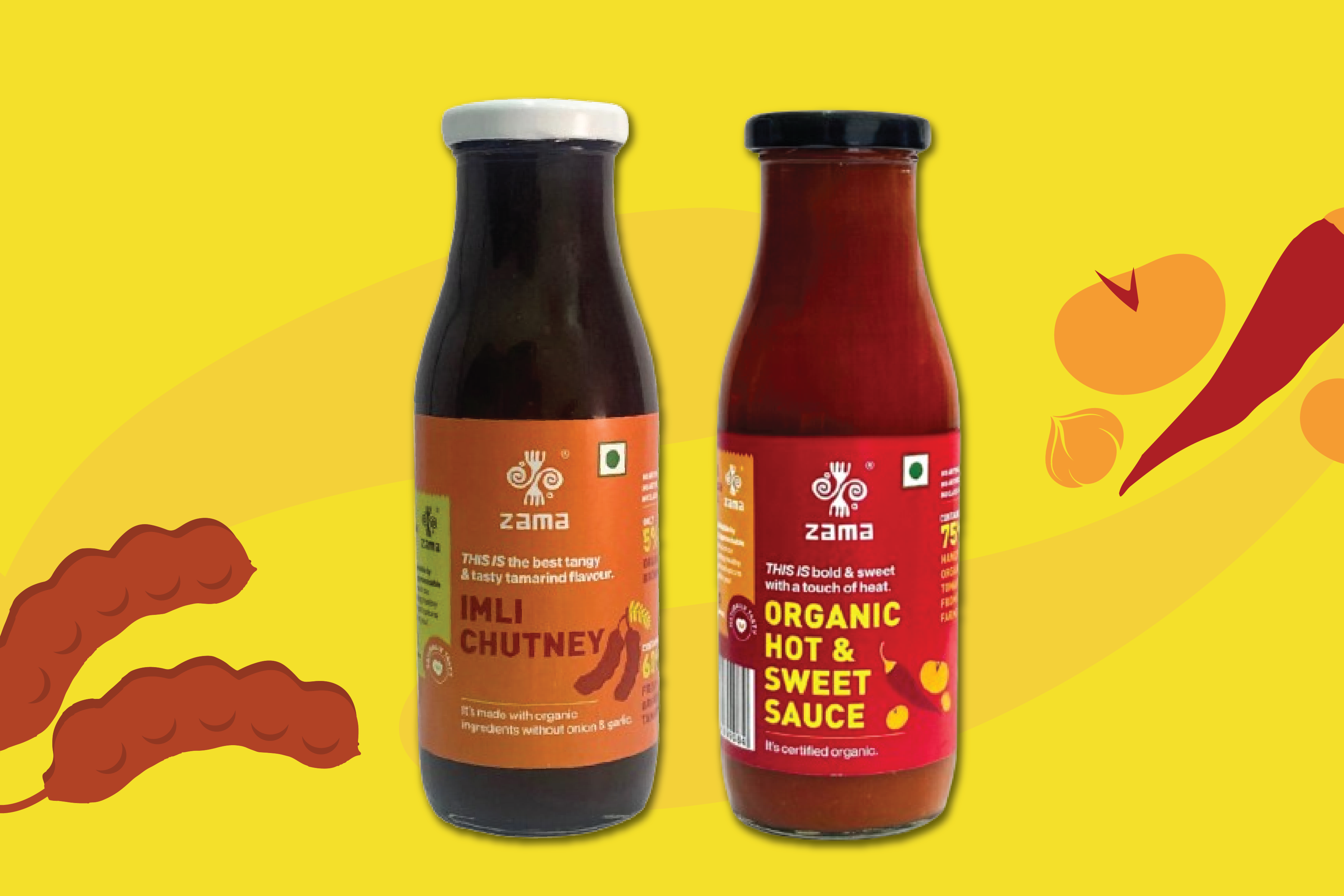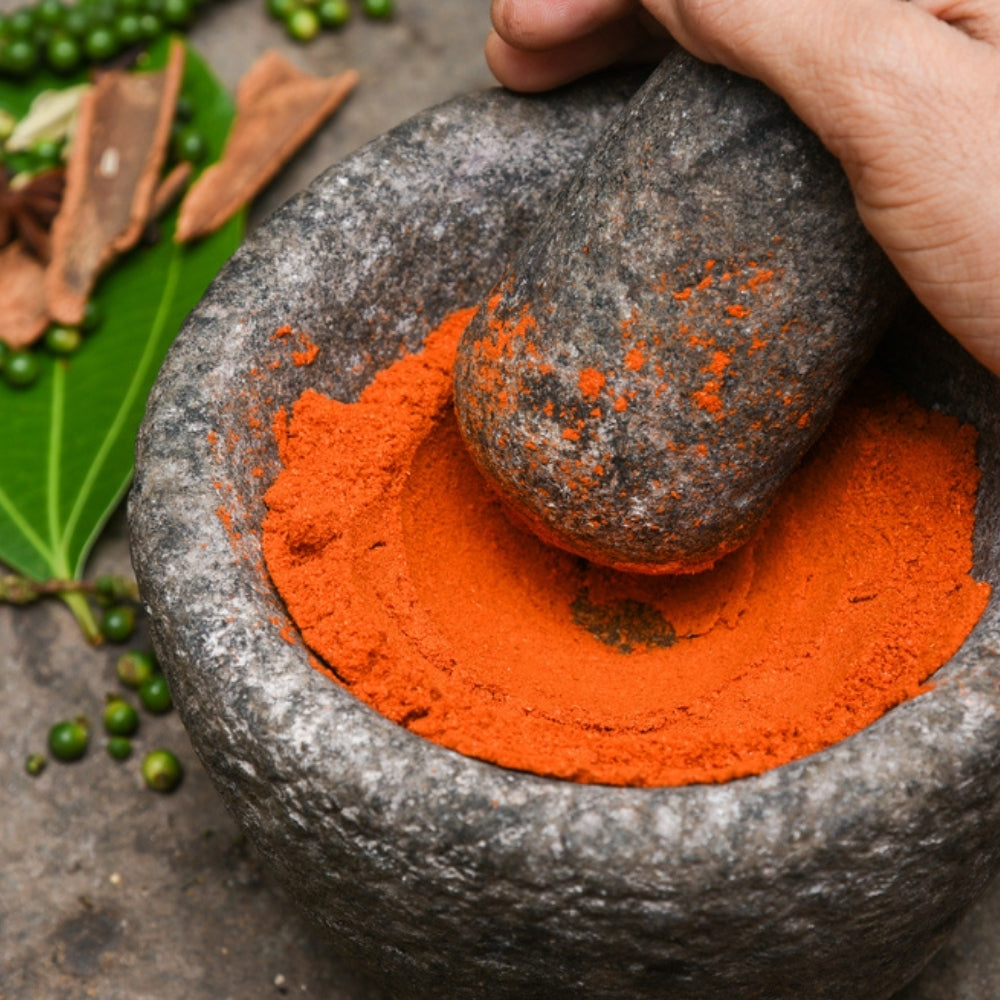Most of us use oil every single day, but rarely think about where it comes from or how it's made. It’s often just that bottle on the shelf—clear, light, familiar.
But that bottle holds more than just fat. The oil you use determines how your food tastes, how well you digest it, and what your body absorbs. In a world where refined oils have become the default, it’s worth understanding what’s really going into your meals.
Because not all oils are equal—and not all “cold-pressed” oils mean what you think they do.
First, Let’s Talk About Refined Oils
Refined oils dominate most kitchens today because they’re cheap, odourless, and consistent. They’re designed for scale, not for nutrition or flavour. The process is industrial:
High-heat extraction (often above 200°C)
Use of solvents like hexane
Bleaching and deodorising to remove colour and smell
Chemical preservatives for long shelf life
The result? An oil that’s clear, shelf-stable—and stripped of almost everything beneficial. No antioxidants, no micronutrients, no character. Just fat.
In choosing refined oils, we’ve normalised blandness and invisibility—at the cost of health.

What Makes Cold-Pressed Oils Different?
Cold-pressed oils are extracted without external heat or chemicals, using mechanical pressure alone. This allows the oil to retain its:
Natural antioxidants (like vitamin E and tocopherols)
Polyunsaturated fatty acids (omega-3, omega-6)
Phytosterols and plant enzymes
True aroma, colour, and flavour
The term “cold-pressed” simply means that the temperature of the oil stays below 50°C during extraction (without any application of external heat or solvents)
But here's the nuance most people don’t know:
50°C is the ceiling, not the gold standard.
If the extraction temperature reaches even 45–49°C, it still qualifies as cold-pressed.
From a legal or technical standpoint, that’s acceptable. But from a nutritional and flavour point of view, the story changes.

Why Temperature Matters More Than You Think
Natural compounds in oils are fragile.
Vitamin E starts degrading at 40–45°C
Polyphenols and enzymes break down with heat
Higher temps (even if not external) accelerate oxidation, reducing nutritional value and quality
The lower the extraction temperature, the more of these compounds remain intact.
Some producers—(Zama!!)—choose to press oils at even lower temperatures (25–30°C) by slowing down the process deliberately. That slower press yields less oil but much higher quality. It’s not just about preservation—it’s about respect for the ingredient.
This matters especially when oil is consumed daily, often in cooked meals, marinades, pickles, or raw applications like salad dressings or baby food.
Cold-Pressed vs Wood-Pressed Oils: What’s the Difference?
They’re related—but not interchangeable.

Wood-pressed oil (kachhi ghani) is essentially a form of cold-pressed oil—but done using traditional Indian tools that create less friction and retain more flavour. The wooden pestle (usually powered by bulls or a slow motor) crushes seeds slowly, keeping temperature low and integrity high.
All wood-pressed oils are cold-pressed. But not all cold-pressed oils are wood-pressed.
How to Know If Your Oil Is Actually Good
The Right Indicators
-
Terms like “cold-pressed,” “wood-pressed,” or “kachhi ghani”
-
Slight cloudiness or sediment
-
A distinct aroma—mustard should smell sharp, sesame should be earthy
-
Transparent sourcing and production process
The Red Flags
-
Words like “refined,” “light,” “blended,” or “fortified”
-
Completely clear, neutral-smelling oils (usually over-processed)
-
Bottles with no mention of method or processes
Benefits of True Cold-Pressed Oils
Higher Nutrient Retention
If pressed below 40°C, oils retain key nutrients like vitamin E, omega-3, omega-6, polyphenols, and plant sterols.
Better for Gut and Heart Health
No chemical residues, no trans fats. These oils support digestion and maintain better cholesterol balance.
More Stable for Cooking
Oils like groundnut, rice bran, and sesame have high smoke points and don’t break down as easily—making them safe even for frying.
Real Flavour
Good oil isn’t neutral.
Mustard oil should be bold
Sesame should be nutty and warming
Coconut should smell like coconut
Flavour is not an accident—it’s proof of what hasn’t been stripped away.

Zama’s Approach: Slower, Lower, Better
What distinguishes one cold-pressed oil from another isn’t just the method—it’s the rigour of the process and the integrity of the sourcing.
At Zama:
-
We work with organic farmers who grow indigenous, high-quality oilseeds, nuts, or rice bran—not commodity-grade stock.
-
Our oils are extracted at slower speeds and lower temperatures (~30°C) to preserve nutrients without friction or heat rise.
-
Each batch is pressed fresh in small lots
-
We don’t add flavours or preservatives. We don’t blend oils.
Varieties of Oils At Zama
Each oil has its place in Indian food traditions—and its own unique benefits.
Wood-Pressed Groundnut Oil – Rich, earthy, brilliant for sabzis, poha, or even baking.
Cold-Pressed Rice Bran Oil – Subtle, heart-healthy, great for daily cooking.
Wood-Pressed Black Mustard Oil – Sharp, bold, ideal for tadka, pickling and Indian cooking
Wood-Pressed Sesame Oil – Nutty, warming, perfect fo idlis, salads or Asian food.
Extra Virgin Coconut Oil – Pressed from fresh coconut milk, its naturally aromatic, great for cooking, baking, even baby massage!
Extra Virgin Avocado Oil – High in monounsaturated fats, ideal for low-heat cooking or raw use in salads.
Wood-Pressed Sunflower Oil – Light and great for general-all-purpose cooking.

Go Slower to Eat Better
Good oil is not invisible. It has flavour. It has a story. And it has consequences—on your food, your health, and the people who produce it.
We’re used to oil being just another ingredient. But when you shift to truly cold-pressed oils—especially ones pressed slowly, at temperatures closer to 30°C—you begin to feel the difference. In digestion. In taste. In how your food feels after a meal. This isn’t a lifestyle trend. It’s a return to how things were always meant to be done.
FAQs: Everything You’ve Wondered About Cold-Pressed Oils
1. What exactly is cold-pressed oil?
Cold-pressed oil is extracted mechanically—without using heat or chemical solvents—so that the temperature stays below 50°C. This gentle process helps retain the oil’s natural nutrients, antioxidants, and aroma. It’s the opposite of refined oil, which is processed at high heat and loses much of its nutritional value.
2. Is there a difference between 50°C and Zama’s 25–30°C process?
Yes—and it’s significant.
While anything below 50°C qualifies as “cold-pressed,” we press even slower to stay around 25–30°C. Lower temperatures mean less oxidation, better nutrient retention, and more of the good fats and antioxidants your body actually needs. It’s not just cold—it’s considered.
3. Can I use cold-pressed oils for daily Indian cooking?
Absolutely. Oils like groundnut, mustard, sesame, and rice bran are traditionally used in Indian kitchens because they hold up well to heat. When cold-pressed properly, they’re not just safe for cooking—they’re ideal.
4. Are cold-pressed oils safe for children and babies?
Yes. High-integrity cold-pressed oils are free from chemicals, solvents, and preservatives. Oils like extra virgin coconut oil (or fats like Pure A2 Desi Cow Ghee) are especially beneficial for growing bodies—whether used in meals, baby massage, or home remedies.
5. Why is cold-pressed oil more expensive than regular oil?
High quality inputs — seeds, nuts, or rice bran, slower extraction, lower yield per kilo and no additives or shortcuts
You’re paying for what stays in the oil—the nutrients, the flavour, the integrity—not what’s removed.



